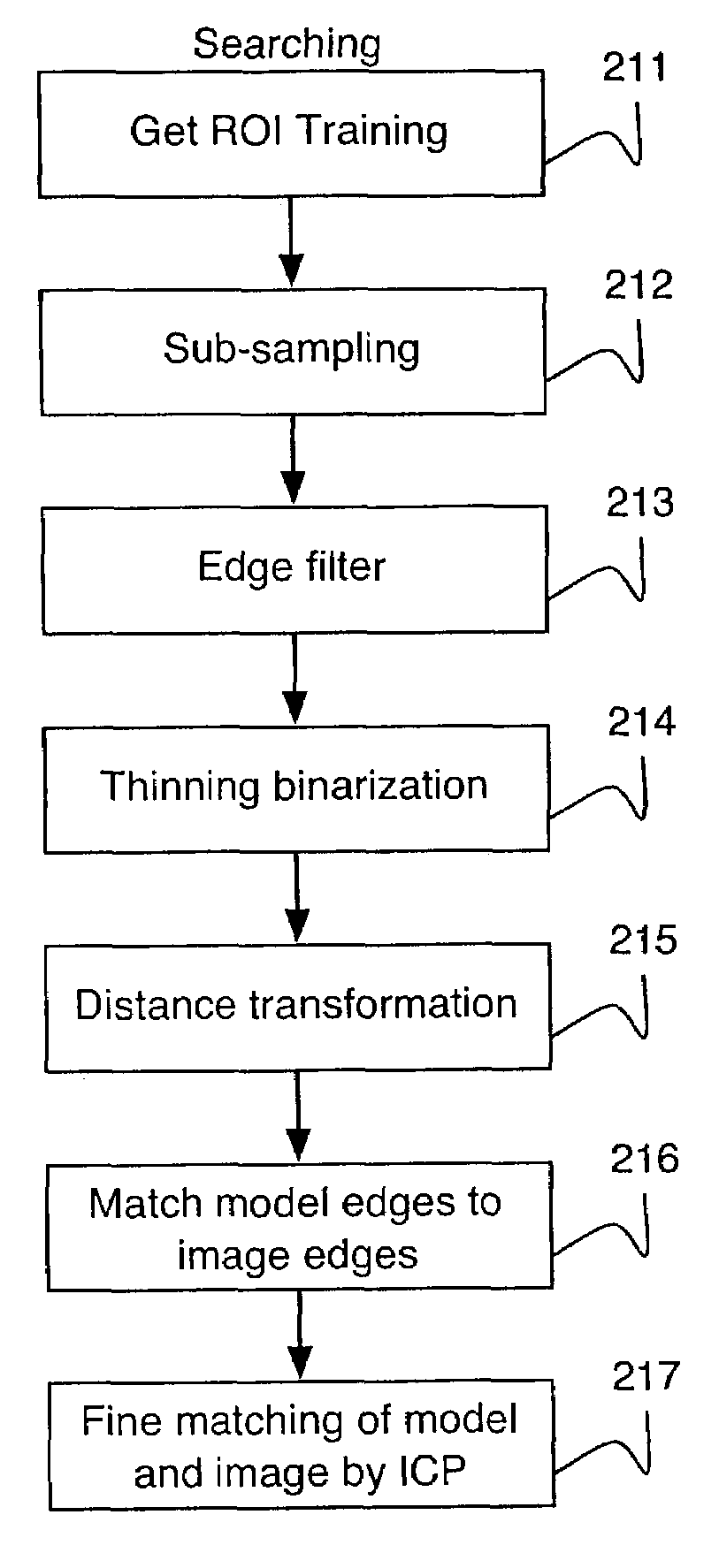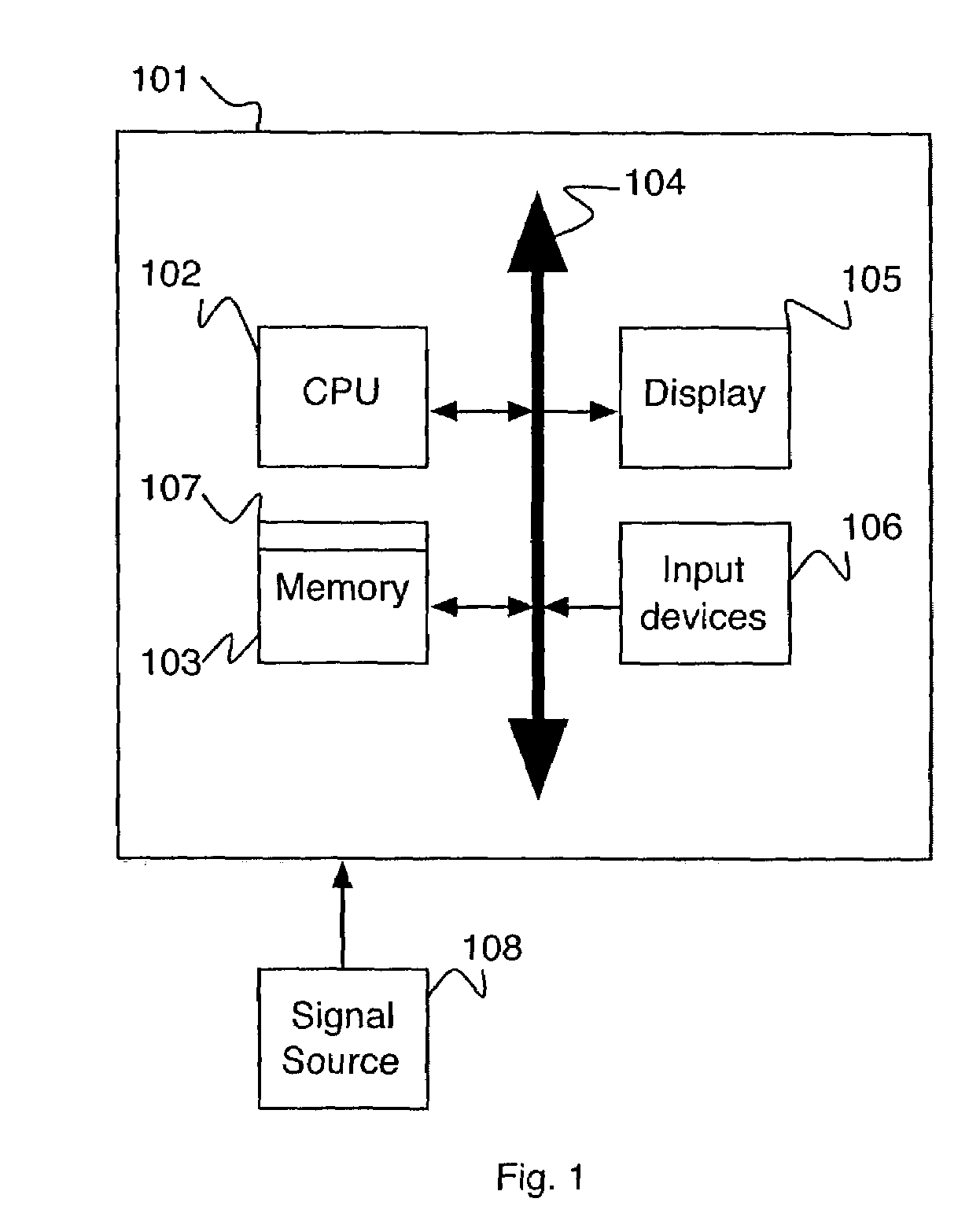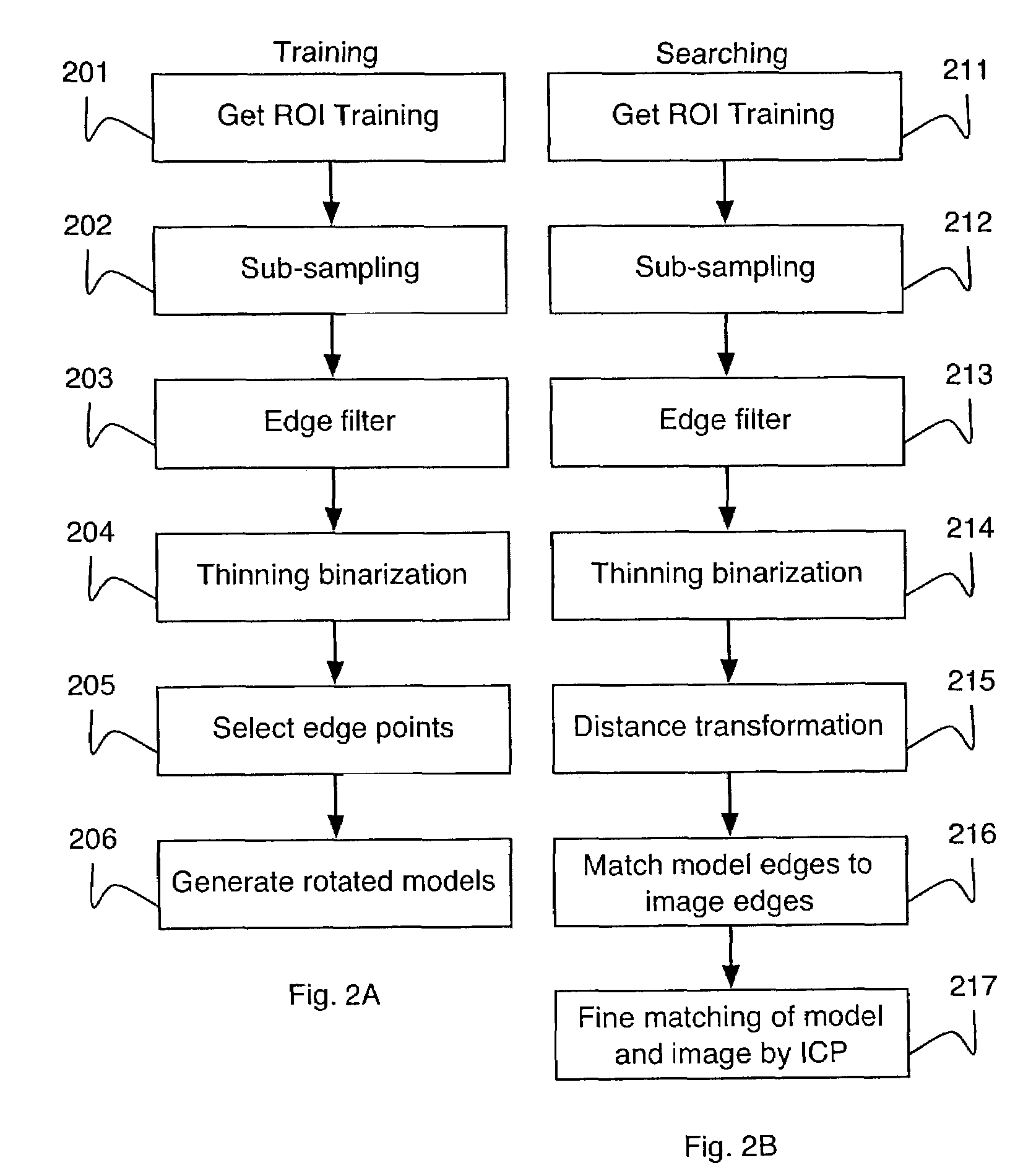Fast two dimensional object localization based on oriented edges
a two-dimensional object and edge orientation technology, applied in the field of computer vision, can solve problems such as unstable approaches to illumination changes, template matching is sensitive to illumination changes that cannot be compensated, and image enhancement is sensitive to such changes
- Summary
- Abstract
- Description
- Claims
- Application Information
AI Technical Summary
Problems solved by technology
Method used
Image
Examples
Embodiment Construction
[0021]A method for feature based two dimensional object localization in a gray scale image can be based on a determination of an oriented edge representation of one or more objects (an edge image). For a given edge image, in a preprocessing stage sub-sampling, smoothing and edge filtering can be performed. The edges can be thinned. Edge orientation and length of edge segments can be determined for the edge image. A distance transformation can be determined on the edge image. A matching method, taking point distance as well as edge orientation into account, determines a position and an orientation of one or more objects in the gray scale image even in the presence of heavy clutter.
[0022]In contrast to area-based algorithms, according to an embodiment of the present invention, an object search is not carried out based on gray value images, but is based on edge features. Edges are more stable with respect to changes in illumination within a gray scale image. Thus, edges result in a sma...
PUM
 Login to View More
Login to View More Abstract
Description
Claims
Application Information
 Login to View More
Login to View More - R&D
- Intellectual Property
- Life Sciences
- Materials
- Tech Scout
- Unparalleled Data Quality
- Higher Quality Content
- 60% Fewer Hallucinations
Browse by: Latest US Patents, China's latest patents, Technical Efficacy Thesaurus, Application Domain, Technology Topic, Popular Technical Reports.
© 2025 PatSnap. All rights reserved.Legal|Privacy policy|Modern Slavery Act Transparency Statement|Sitemap|About US| Contact US: help@patsnap.com



